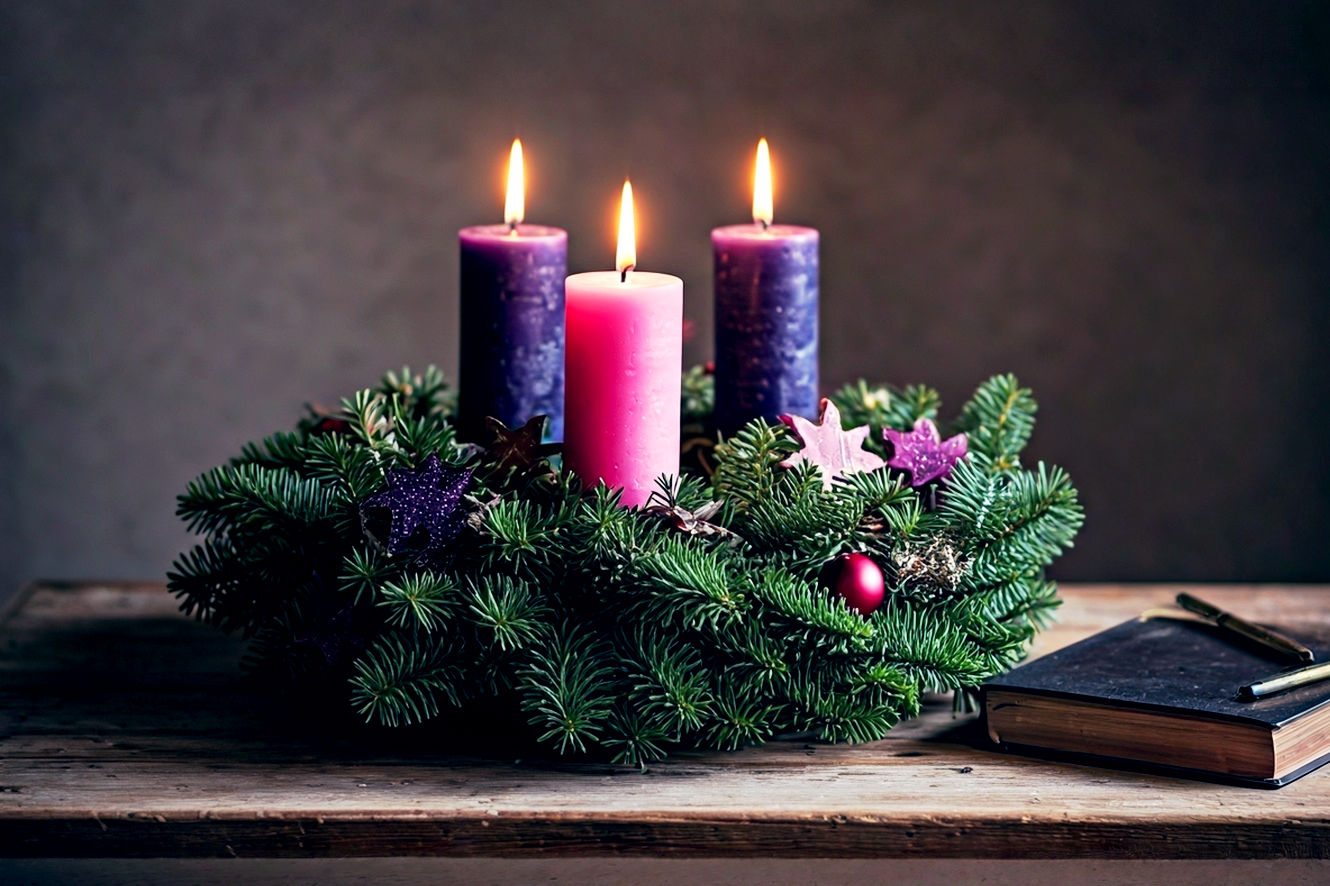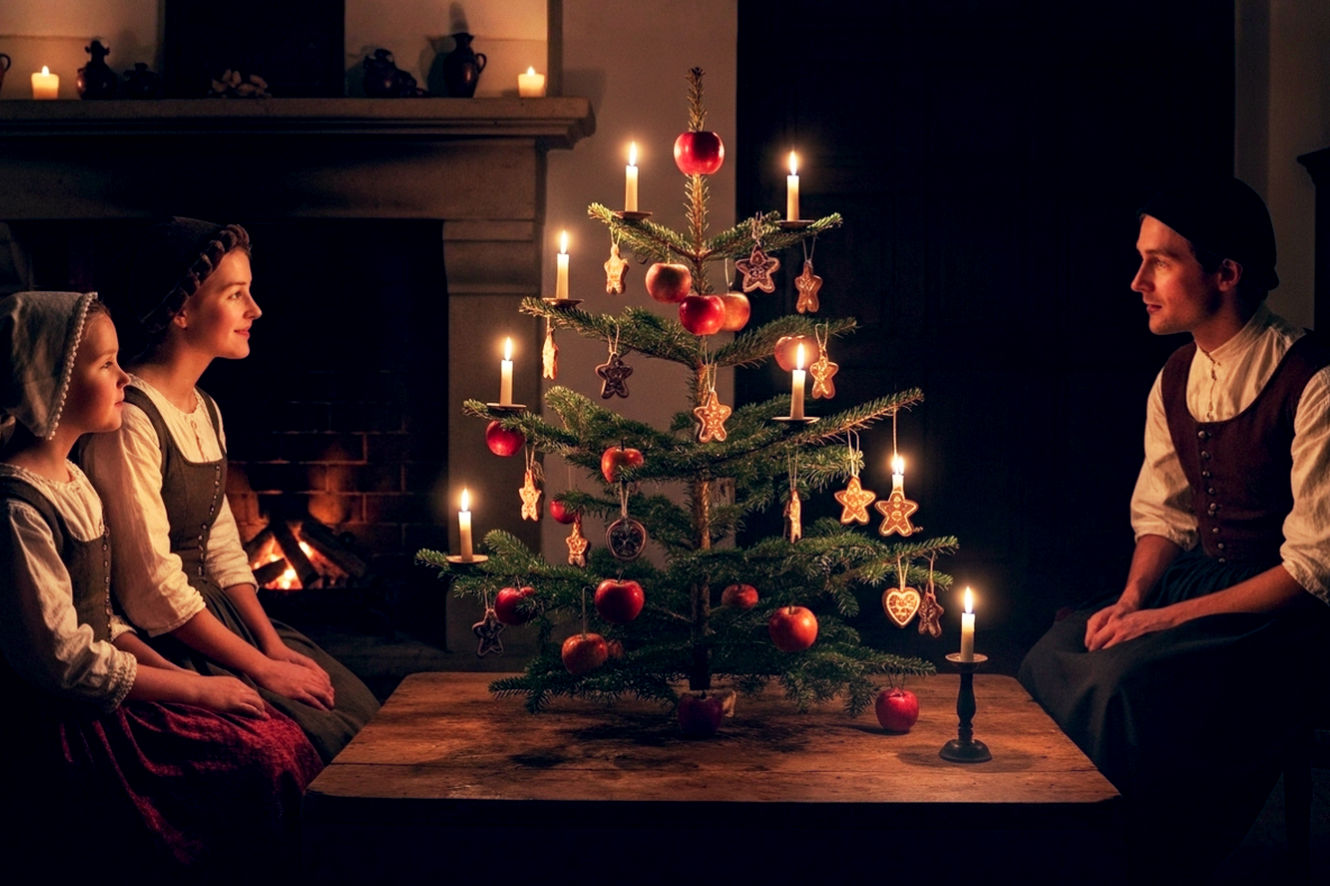This post may contain affiliate links. If you make a purchase through these links, we may earn a commission at no additional cost to you.
As the holiday season approaches, we often find ourselves drawn to cherished traditions—the sparkling lights, the scent of pine, and the festive, if sometimes awkward, moment of standing under a sprig of mistletoe. This unassuming plant, with its waxy leaves and pearl-white berries, has become an iconic symbol of romance and holiday cheer. But have you ever stopped to wonder why? The history behind the mistletoe is far more complex and fascinating than a simple Christmas custom, reaching back through millennia to a time of ancient priests, powerful gods, and deep-seated folk magic. It’s a story of transformation, where a parasitic plant was elevated to a symbol of life, peace, and eventually, love.
To truly understand mistletoe’s journey, we must first look at the plant itself—a humble organism with a startlingly unique biology that made it a prime candidate for supernatural veneration.
The Botany of a Parasite: A Plant of Legend and Life
Mistletoe isn’t your average plant; it’s a hemiparasite, meaning it gets some of its nutrients from a host tree but can also produce its own through photosynthesis. It attaches to a host’s branch using a specialized root-like structure called a haustorium, which burrows into the tree’s living tissue to siphon off water and minerals. In a sense, it’s a thief of life, which makes its symbolism as a source of vitality and healing all the more profound.
There are many different species of mistletoe around the world, but the two most famous are the European mistletoe (Viscum album) and the American mistletoe (Phoradendron serotinum). The European variety, with its classic green leaves and translucent white berries, is the plant most famously associated with ancient Celtic and Norse mythology. The American species, common throughout the southern United States, is the one you’re most likely to see in holiday decorations today. Both types share a key characteristic: their berries are mildly toxic if ingested by humans, although they are a vital food source for many birds. Birds are actually the key to the mistletoe’s survival, as they eat the sticky berries and, when they fly off, the seeds cling to their beaks or are excreted onto new branches, where they can germinate and start the cycle anew.
This unusual way of life—floating above the earth, suspended between heaven and tree—is what first drew the attention of ancient peoples. The plant’s ability to remain green and vibrant through the cold winter months while its host tree lay dormant made it a powerful symbol of fertility and life in the face of death. For cultures deeply attuned to the cycles of nature, this was no mere coincidence; it was a sign of divine favor.
Ancient Roots: Mistletoe of the Celtic Druids
Perhaps the most famous and influential chapter in mistletoe’s story comes from the Celts, specifically their priestly class, the Druids. Our primary source for this comes from the Roman naturalist Pliny the Elder, who, in the first century AD, described a sacred Druidic ritual involving mistletoe. While Pliny’s account is a secondary source—he wasn’t there himself—it’s the most vivid picture we have of mistletoe’s veneration in ancient Gaul and Britain.
According to Pliny, the Druids held mistletoe growing on an oak tree as the most sacred of all. This was a critical detail, as mistletoe rarely grows on oak, making such a find a sign of immense power and divine will. When such a plant was discovered, a ceremony would be held on the sixth day of the moon, which was believed to be a day of great astrological significance. The ritual itself was a spectacle: a priest, dressed in white robes, would climb the oak tree and, using a golden sickle, cut the mistletoe boughs. The boughs were not allowed to touch the ground; they were caught on a white cloth held by the priests below. Following the ritual, two white bulls were sacrificed, and prayers were offered to the gods, a testament to the gravity of the occasion.
The mistletoe harvested from this ritual was believed to possess incredible healing and protective properties. It was thought to be a panacea—a cure-all—for diseases and an antidote for poisons. People would hang it over their doors to ward off evil spirits, and it was considered a powerful fertility charm. The Druids saw the plant as a physical manifestation of the gods’ blessing, a life force that could be harnessed to protect and heal their people. This is the origin of the term “All-Heal” often associated with mistletoe. The golden sickle, the white robes, and the oak tree were all crucial elements in this magical transfer of power.
It’s important to note that Pliny’s account is a singular historical snapshot, and it’s difficult to know how widespread or common this ritual truly was. Nevertheless, it cemented mistletoe’s reputation in the Western world as a plant of profound spiritual importance, a reputation that would evolve and endure for centuries.
The Kissing Bough’s Deadly Origin: A Norse Mythology Tale
While the Druids gave mistletoe its reputation as a sacred life-giver, another ancient culture added a darker, yet equally significant, layer to its mythology. Norse mythology, a rich tapestry of gods, giants, and heroes, provides a powerful story that transformed mistletoe from a symbol of life into one of peace and love.
The myth centers on Baldur, the beloved god of light, joy, and purity. Baldur was having premonitions of his own death, and his mother, Frigg, the goddess of marriage and motherhood, was terrified. To protect her son, she traveled the nine realms, extracting an oath from every living thing—every animal, plant, and stone—that they would never harm Baldur. Her efforts were successful, and Baldur became invulnerable. The gods amused themselves by throwing weapons at him, watching them harmlessly bounce off.
However, the mischievous god Loki was jealous of Baldur’s invulnerability. He disguised himself as an old woman and tricked Frigg into revealing the one living thing she had overlooked: the unassuming mistletoe plant. Loki, knowing this small plant was the only weapon that could harm Baldur, found some mistletoe and fashioned it into a small dart or arrow. He then convinced Baldur’s blind brother, Hodr, to participate in the game. Guiding Hodr’s aim, Loki helped him throw the mistletoe dart at Baldur, who fell dead. Frigg’s tears, shed for her fallen son, are said to have turned into the mistletoe’s white berries.
In the ensuing grief, the gods were able to revive Baldur. Overjoyed, Frigg declared that mistletoe would no longer be a symbol of death. Instead, she proclaimed that anyone who stood under it would receive a kiss, not as a sign of love, but as a promise of peace. This act, of transforming a symbol of sorrow into a symbol of goodwill and reconciliation, is the true origin of the kissing tradition. It marked the mistletoe’s transition from a weapon of death to a symbol of life, a sentiment that would eventually be embraced by countless generations.
Medieval Folk Magic and the “Kissing Bough”
The legends of the Druids and the Norse gods didn’t fade away. Instead, they blended with and influenced the folk traditions of medieval Europe. Mistletoe became a common fixture in homes not just for decoration, but for its perceived magical properties. People continued to hang it over doorways and in stables to protect against lightning, fire, and evil spirits. It was thought to possess a special power against witches and their enchantments, likely a lingering memory of its divine status in pre-Christian faiths. The plant was also used as a folk remedy to treat ailments like epilepsy and infertility, although these uses were more rooted in superstition than in science.
As Christianity spread, many pagan traditions were either suppressed or assimilated into the new faith. Mistletoe was an oddity—it wasn’t mentioned in the Bible, and its pagan history made it an unwelcome guest in many churches. This is why you rarely, if ever, see mistletoe inside a church during Christmas, despite its ubiquity elsewhere.
However, outside the church walls, the plant’s legacy of peace and fertility persisted. By the 18th century, the kissing custom, born from Frigg’s promise, began to emerge in Britain, evolving into a more structured social ritual. The mistletoe was often part of a larger decoration known as the “kissing bough” or “kissing ball.” This was a more elaborate construction, often a large hoop or sphere decorated with evergreens, ribbons, candles, and mistletoe. Hanging in the center of the room, it served as the focal point for the holiday festivities. The custom, as it was practiced, had specific rules: a man was allowed to kiss any woman standing underneath the kissing bough, and with each kiss, a berry was removed. Once all the berries were gone, the kissing was to stop. This rule-based system turned what might have been a chaotic free-for-all into a playful and acceptable form of flirtation, especially in an era of strict social etiquette.
The Victorian Era and the Standardization of a Tradition
While the kissing tradition existed prior, it was the Victorian Era (1837–1901) that truly solidified and popularized the custom as we know it today. The Victorians were masters of creating traditions, and they had a particular fondness for weaving symbolism and meaning into their rituals. For them, mistletoe was the perfect symbol for Christmas—it was romantic, it had a rich, ancient history, and it provided a structured, albeit scandalous for the time, opportunity for young men and women to interact.
During this period, the kissing bough became a much simpler affair: a small sprig of mistletoe hung from a doorway or chandelier. The strict Victorian codes of conduct made public displays of affection largely taboo. However, the mistletoe provided a sanctioned exception. The rules, while playful, were also a way to maintain decorum. The tradition became so popular that it spread to other parts of the English-speaking world, including the United States, becoming a permanent fixture of Christmas celebrations. This is also when the association of mistletoe with love and romance became its primary meaning, largely overshadowing its ancient connections to healing and peace.
The Victorians also had a particular fascination with the language of flowers, known as floriography. In this coded language, mistletoe was associated with both romance and overcoming difficulties, a nod to its Norse origins where it brought Baldur back to life. This dual meaning resonated deeply with the Victorian sensibility, which was often sentimental and romantic.
Mistletoe’s Modern Legacy: A Symbiotic Relationship with Our Culture
Today, mistletoe is so ingrained in our holiday culture that we often don’t question its presence. It’s a cliché in romantic comedies, a charming decoration in homes, and a gentle prompt for affection. We have largely forgotten the ancient Druids and the tragic Norse myth, but the essence of those stories remains. The plant’s association with life, peace, and love has endured, proving the power of tradition to evolve and adapt.
The story doesn’t end with folklore, however. In a fascinating full-circle moment, modern science has begun to take a second look at mistletoe’s medicinal properties. While ancient claims of it being a panacea were largely unfounded, recent research has explored mistletoe extracts as a potential complementary cancer therapy, particularly in Europe. Scientists are studying its unique proteins and other compounds to see if they can stimulate the immune system or have other therapeutic benefits. This echoes the Druidic belief that mistletoe was a powerful healer, showing that some ancient wisdom, while not always accurate, can sometimes hold a grain of truth that modern science can explore.
Mistletoe’s journey—from a sacred, life-giving parasite in the eyes of the Druids, to an instrument of death and rebirth in Norse mythology, to a playful catalyst for romance in Victorian England—is a testament to the power of human tradition. It’s a plant that has been at the center of some of our most profound stories about life, death, peace, and love. So the next time you find yourself standing under a sprig of mistletoe, you’re not just participating in a simple holiday custom. You’re taking part in a tradition that connects us to a deep and intricate past, where a humble parasitic plant was once a symbol of the very life force of the world itself. It’s a reminder that even the smallest things can hold the greatest stories.






